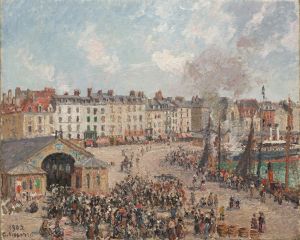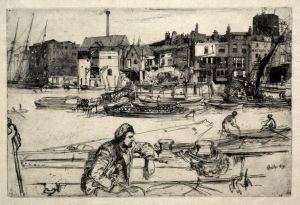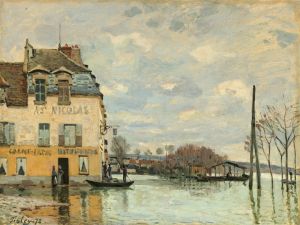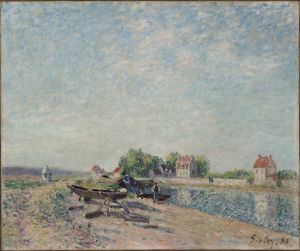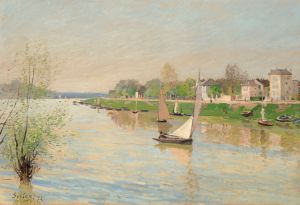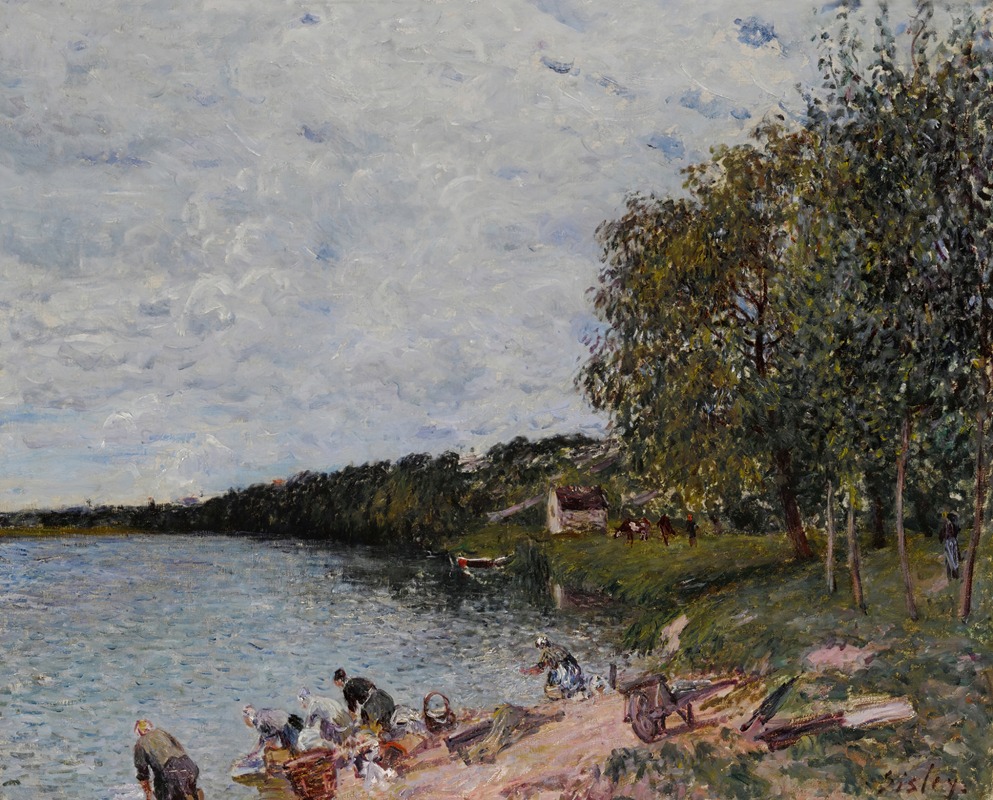
Lavandières près de Champagne
A hand-painted replica of Alfred Sisley’s masterpiece Lavandières près de Champagne, meticulously crafted by professional artists to capture the true essence of the original. Each piece is created with museum-quality canvas and rare mineral pigments, carefully painted by experienced artists with delicate brushstrokes and rich, layered colors to perfectly recreate the texture of the original artwork. Unlike machine-printed reproductions, this hand-painted version brings the painting to life, infused with the artist’s emotions and skill in every stroke. Whether for personal collection or home decoration, it instantly elevates the artistic atmosphere of any space.
"Lavandières près de Champagne" (Washerwomen near Champagne) is a painting by the renowned French Impressionist artist Alfred Sisley. Created in 1876, this artwork exemplifies Sisley's dedication to capturing the natural beauty and everyday life of rural France through the Impressionist style, which emphasizes light, color, and atmosphere over precise detail.
Alfred Sisley was born in Paris in 1839 to British parents and spent most of his life in France. He was a key figure in the Impressionist movement, which sought to break away from the rigid conventions of academic painting. Sisley's work is characterized by its focus on landscapes and his ability to convey the transient effects of light and weather.
"Lavandières près de Champagne" depicts a serene scene of washerwomen working by the river near the village of Champagne, which is located in the Île-de-France region. The painting captures the simplicity and tranquility of rural life, a common theme in Sisley's work. The composition is balanced, with the river flowing diagonally across the canvas, leading the viewer's eye through the scene. The washerwomen are depicted in the foreground, engaged in their daily chores, while the background features lush greenery and a clear sky, typical of Sisley's landscape paintings.
Sisley's use of color in this painting is particularly noteworthy. He employs a palette of soft blues, greens, and earthy tones to create a harmonious and calming effect. The brushwork is loose and fluid, a hallmark of the Impressionist technique, which allows the viewer to sense the movement of the water and the gentle breeze rustling through the trees. The play of light on the water and the reflections of the surrounding landscape are rendered with delicate precision, showcasing Sisley's skill in capturing the ephemeral qualities of nature.
The painting reflects Sisley's interest in the everyday lives of ordinary people and his ability to find beauty in mundane activities. The washerwomen, though engaged in laborious work, are portrayed with dignity and grace, emphasizing the artist's respect for his subjects. This focus on the human element within the landscape adds a layer of depth and narrative to the painting, inviting the viewer to contemplate the relationship between people and their environment.
"Lavandières près de Champagne" is held in high regard as an example of Sisley's mature style and his contribution to the Impressionist movement. The painting is part of the collection at the Musée d'Orsay in Paris, which houses an extensive array of works by Sisley and his contemporaries. The museum's collection provides valuable insight into the development of Impressionism and the artistic innovations of the late 19th century.
In summary, "Lavandières près de Champagne" by Alfred Sisley is a quintessential Impressionist painting that captures the beauty of rural France and the simplicity of everyday life. Through his masterful use of color, light, and composition, Sisley creates a tranquil and evocative scene that continues to resonate with viewers today.







